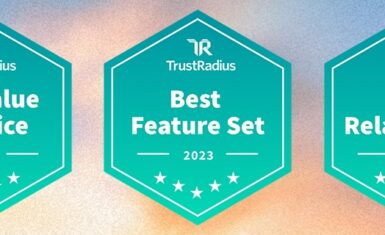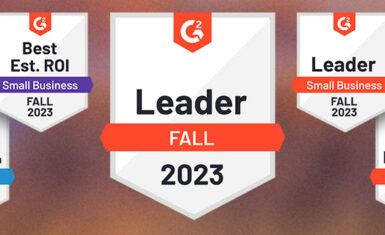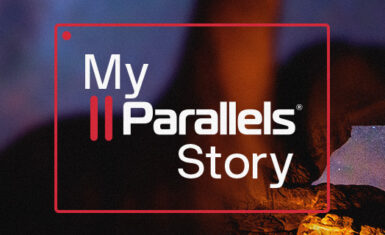Raise your hand if your company has software applications you’ve used for a zillion years. You know they’re outdated, but they’re so woven into the fabric of your operations that you can’t stop using them. You’d argue that they’re not just comfortable; they’re critical.
We see you out there, raising your hands. And we totally get it.
Wouldn’t it be nice if you could give those legacy applications a digital makeover? Well, dust off those floppy disks (or not, because who even has those anymore?) because you’re about to learn how Parallels Desktop can transform your enterprise’s software landscape. Get ready to embrace the past while propelling your business into the future!
Meet your legacy software hero
Let’s face it—legacy software has its charm. Who doesn’t still use Microsoft Money, QuickBooks Desktop, ProFile, Vuescan or even Quicken Rental Property Edition? It’s like a vintage record player in a world of streaming services. But just like the nostalgic tunes you love, legacy software can sometimes feel a bit… well, outdated. You might find yourself stuck between the rock of old-school software and the hard place of modern needs.
Maybe you are moving to a different machine or operating system. Perhaps a required upgrade will render your critical apps incompatible. Either way, you’re worried that you have to choose between moving forward or getting to keep using the apps you depend on.
Enter Parallels Desktop, your knight in shining digital armor. Imagine a world where you can run those critical legacy applications alongside your modern software without breaking a sweat. It’s like pairing a classic car with a futuristic hoverboard—the best of both worlds. (Did we just steal a plot point from Back to the Future Part II? Speaking of nostalgia…)
How does Parallels Desktop work its magic?
Glad you asked! Parallels Desktop uses a virtualization technology to power up a virtual PC inside your Mac computer, making it super easy to work with. Here’s how it works:
Step 1: Install Parallels Desktop. Installation and setup couldn’t be simpler. With quick implementation and a short, smooth learning curve, you’ll be ready to roll in no time.
Step 2: Create a virtual machine. This is your digital time capsule. You can install the operating system your legacy software needs to run effectively. Maybe your office is switching to Macs, but your team can’t seem to break free of your trusty Windows apps. With Parallels Desktop, you don’t need to pick one or the other.
Step 3: Run your legacy software. With the click of a button, you’re whisked away to the good ol’ days of your beloved Windows software. No more “compatibility mode” struggles or worrying about system conflicts.
Step 4: Work miracles. Whether it’s accounting software from the ’90s or a client management system from the early 2000s (we know some of those are still out there!), Parallels Desktop lets you make the most of your legacy applications without compromising your modern workflow.
Why Parallels Desktop is the ultimate legacy software sidekick for your enterprise
Now you know how to use Parallels Desktop. Are you still stuck on why? Understandable. We’ve got you covered.
- Compatibility and Integration. Parallels Desktop not just allows users to access critical legacy software without maintaining outdated hardware or operating systems, but also provides a deep integration with Mac systems, like keyboard, display, camera, microphone, sound, files, and more. However, note that some legacy software may not run on a Mac with Apple silicon.
- Resource optimization. You might love your legacy Windows applications, but are you willing to dedicate an entirely separate machine or partition if it requires specific configurations? That’s a big yikes for efficiency.
Parallels Desktop lets you run multiple operating systems simultaneously on a single machine, optimizing hardware resources and reducing the need for separate devices.
- Seamless upgrades. Upgrading to new Mac software can be seriously disruptive and time-consuming for an enterprise. Parallels Desktop minimizes this disruption by keeping your work environment in a separate context of a virtual machine that is not affected by software updates on Mac. This smooth transition helps maintain business continuity and prevents sudden productivity drops due to software upgrades.
- Training and familiarity. If everyone in your office relies on that legacy software as much as you do, there might be an uproar if you force a transition to an entirely new application. Be a hero and let your team use the familiar interface they know and love. It’ll cut down on training time and shorten the learning curve.
Plus, Parallels Desktop means your team can use the devices they prefer—and run the required applications, whether a Mac fan or a PC diehard. It’s like offering coffee and tea at the meeting—everyone gets what they want.
- Security and maintenance. We have to mention this one—unsupported legacy software can become a major risk due to a lack of updates and patches. Parallels Desktop isolates VMs from the host operating system, reducing the risk of security breaches. Plus, it’s easier to maintain and update a virtualized environment rather than multiple physical systems.
- Futureproofing. By enabling legacy software to run on modern hardware and operating systems, Parallels Desktop future-proofs these applications. You can continue to utilize your critical legacy software as long as needed. And when you’re ready to transition to modern alternatives, you can do so at your own pace.
Embrace the best of both worlds
Load that hoverboard into the trunk of your classic car, because you’re about to have the best of both worlds. Parallels Desktop is your ticket to marrying the past with the present while keeping your business operations running like a well-oiled machine. Legacy software no longer needs to be a time capsule gathering dust; it can actively participate in your tech-driven journey.
On the subject of being part of a journey, this post is part of our #MyParallelsStory series.
We’d love to hear your #MyParallelsStory and learn how using Parallels Desktop with legacy software makes your life easier. Share your experience on social media today, using #MyParallelsStory.




